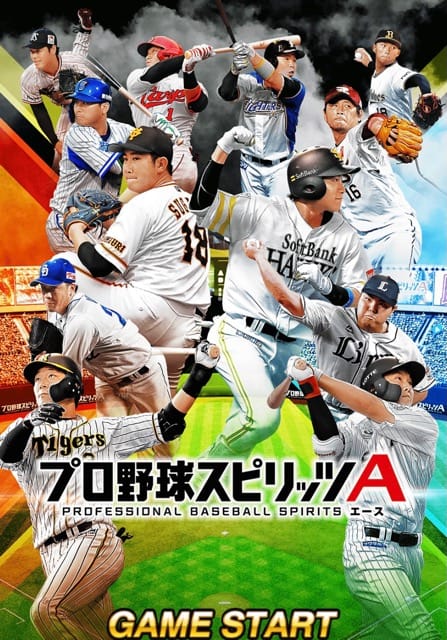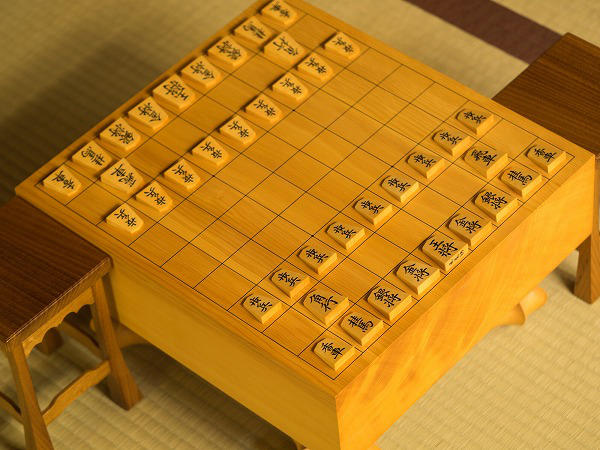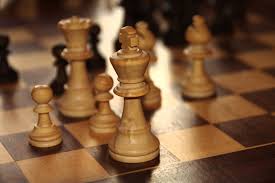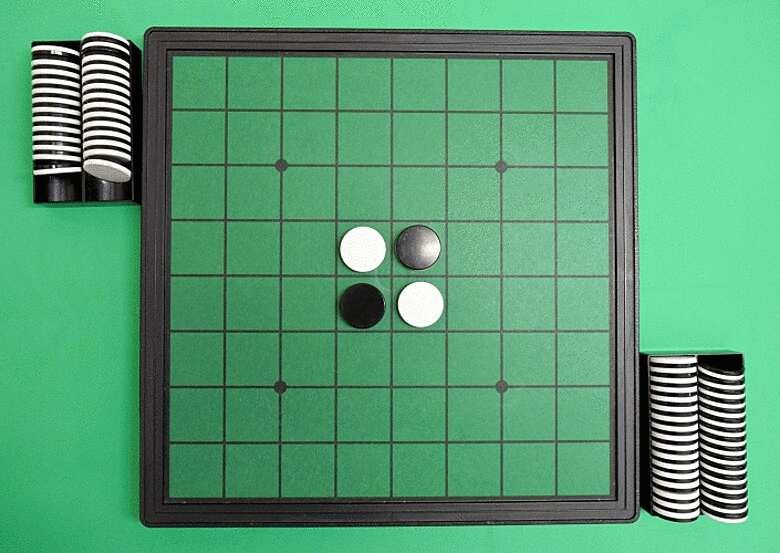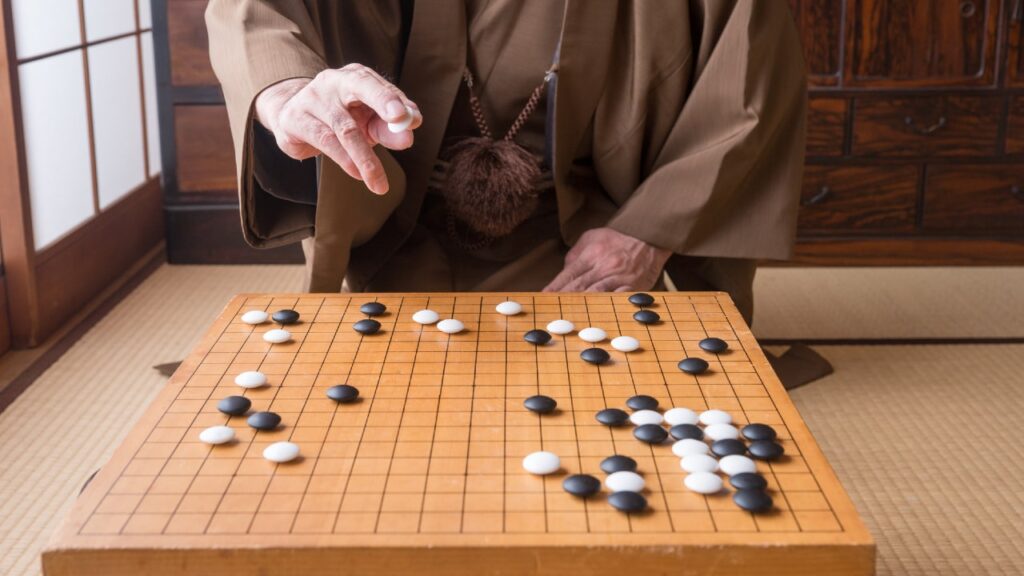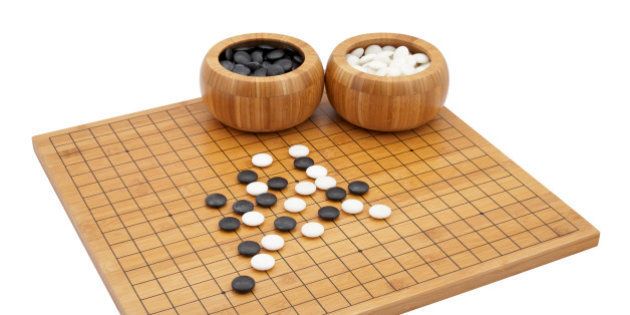
目次
- 1 Go glossary
- 1.1 Blue – best move
- 1.2 empty corner
- 1.3 Agehama
- 1.4 taste
- 1.5 Atari
- 1.6 Thickness
- 1.7 side dish
- 1.8 Atekomi
- 1.9 Atetsuke
- 1.10 Amashi
- 1.11 Vandalism
- 1.12 Go
- 1.13 History of Go
- 1.14 Go nine items
- 1.15 Go Hall of Fame
- 1.16 Stone – Go stone
- 1.17 under the stone
- 1.18 One square
- 1.19 Ikken Tobi
- 1.20 thin
- 1.21 Press
- 1.22 Uchikaki
- 1.23 Overshot
- 1.24 beat around
- 1.25 Uttegaesi
- 1.26 Egri
- 1.27 Oiotoshi
- 1.28 throne
- 1.29 large monkey
- 1.30 big gamer
- 1.31 Otakame
- 1.32 Large hazushi
- 1.33 Oki
- 1.34 Go
- 1.35 Osae
- 1.36 Osamari
- 1.37 Oshi
- 1.38 Oshitsubushi
- 1.39 heavy
- 1.40 Kakari
- 1.41 Fixed location
- 1.42 bet
- 1.43 missing eye
- 1.44 Living with a missing eye
- 1.45 Kasu stone
- 1.46 shape
- 1.47 Shoulder strain
- 1.48 Kaname stone
- 1.49 turtle shell
- 1.50 hard
- 1.51 Karami
- 1.52 light
- 1.53 Kansai Ki-in
- 1.54 Loose clothing
- 1.55 benefit
- 1.56 handedness
- 1.57 Shogi player
- 1.58 Kisei
- 1.59 Chess match
- 1.60 Game record
- 1.61 emergency situation
- 1.62 Kiri
- 1.63 Kirichigai
- 1.64 cutting fee
- 1.65 Chess ability
- 1.66 stupid form
- 1.67 Guzumi
- 1.68 Rot
- 1.69 Judging the situation
- 1.70 Keima
- 1.71 erase
- 1.72 Geta
- 1.73 Go stones
- 1.74 Kou
- 1.75 small monkey
- 1.76 Cosmi
- 1.77 Kosmitsuke
- 1.78 Gosei
- 1.79 second move
- 1.80 five five
- 1.81 Go board
- 1.82 Detailed
- 1.83 Komi
- 1.84 Small eyes
- 1.85 basis
- 1.86 Sagari
- 1.87 Sashikomi
- 1.88 Sabaki
- 1.89 crape myrtle
- 1.90 three
- 1.91 triple star
- 1.92 earth
- 1.93 life and death
- 1.94 go game resulting in tie
- 1.95 Shicho
- 1.96 Shinogi
- 1.97 Shibori
- 1.98 Shimari
- 1.99 Pure Go
- 1.100 hives
- 1.101 fixed place
- 1.102 joseki
- 1.103 female shogi player
- 1.104 logic
- 1.105 Susoaki
- 1.106 abandoned stone
- 1.107 Slip
- 1.108 corner
- 1.109 Ita Roku in the corner
- 1.110 Magari four eyes in the corner
- 1.111 Leveling the ground
- 1.112 Seki
- 1.113 Attack
- 1.114 Attacking each other
- 1.115 competition
- 1.116 first move
- 1.117 market price
- 1.118 game clock
- 1.119 direct three
- 1.120 Mutual
- 1.121 high eyes
- 1.122 Takefu
- 1.123 Tataki
- 1.124 No good
- 1.125 Damedumari
- 1.126 Dan grade system
- 1.127 Start
- 1.128 Medium press (win)
- 1.129 Challenge system
- 1.130 Tsugi
- 1.131 Tsukiari
- 1.132 Go making
- 1.133 make
- 1.134 Tsuke
- 1.135 Tsukekoshi
- 1.136 Tsukenobi
- 1.137 Tsubure
- 1.138 Tsume
- 1.139 Tsumego
- 1.140 maintenance
- 1.141 Tesuji
- 1.142 iron pillar
- 1.143 a dead stop
- 1.144 cutting corners
- 1.145 hand split
- 1.146 Tengen
- 1.147 surrender
- 1.148 Tobi
- 1.149 Tobikomi
- 1.150 Tobitsuke
- 1.151 Three eyes without taking
- 1.152 Torikake
- 1.153 cut off
- 1.154 take
- 1.155 Nakade
- 1.156 Nadare
- 1.157 Narabi
- 1.158 Nigiri
- 1.159 Nihon Ki-in
- 1.160 genius
- 1.161 In stock
- 1.162 net go
- 1.163 Nuki
- 1.164 Nozoki
- 1.165 Novi
- 1.166 defeat
- 1.167 Bakahachi
- 1.168 Hazama
- 1.169 scissors
- 1.170 scissors
- 1.171 Hanazuke
- 1.172 Hanago and Hanaroku
- 1.173 Hane
- 1.174 Hama (Agehama)
- 1.175 Fuck hands
- 1.176 half game
- 1.177 Hiraki
- 1.178 Hirakizume
- 1.179 sealing hand
- 1.180 foundation stone
- 1.181 Contains
- 1.182 Furikawari
- 1.183 side
- 1.184 Boushi
- 1.185 Horikomi
- 1.186 Poka
- 1.187 Star
- 1.188 Honinbo
- 1.189 master
- 1.190 Pimped out
- 1.191 Magari
- 1.192 Magari Yomoku
- 1.193 Macri
- 1.194 Manet Go
- 1.195 arranged marriage
- 1.196 matchmaking calculation
- 1.197 green
- 1.198 eye
- 1.199 master
- 1.200 eye
- 1.201 Estimate
- 1.202 eye hazushi
- 1.203 Motare
- 1.204 Bring your own
- 1.205 pattern
- 1.206 Yurumishi butterfly
- 1.207 Yose
- 1.208 contact
- 1.209 Six deaths, eight lives
- 1.210 Wakare
- 1.211 Watari
- 1.212 Wariuchi
- 1.213 warikomi
- 2 At the end
Go glossary
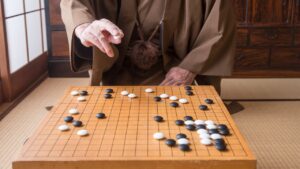
Go is a board game that has been popular since ancient times.
Even today, it is loved by many people.
Go is a very simple game, but the possibilities for playing it are endless.
New tactics and strategies continue to be created even in professional games.
In recent years, the game of Go has come to be enjoyed around the world, and there are more opportunities to interact with people from all over the world through international tournaments.
It’s a game of Go, but beginners don’t even know the rules.
Maybe you don’t understand the terminology at all?
This time, I created a simple glossary of Go terms.
If you know the terminology of Go, you will definitely have a deeper understanding of Go.
Blue – best move
In Go, the term “blue” refers to the best move.
This expression comes from the Go AI analysis tool Lizzie, which displays the best move in blue, and has come to be used by professional Go players and advanced amateurs.
It is interesting to see that the evolution of AI has brought new terminology to the world of Go, revolutionizing the way the game is analyzed and learned.
empty corner
Explanation: An “empty corner” literally means a corner of the board that is still empty and neither player has any stones placed on it.
This is one of the strategically important points in the early stages.
Empty corners are full of possibilities, and how the game develops from there is up to the player’s strategy, giving you a sense of the depth of Go.
Agehama
Explanation: Agehama refers to the stones placed outside the board that are obtained when you capture your opponent’s stones.
At the end of the game, these stones count as your opponent’s land.
Agehama shows the results of direct battles, heightens the tension between offense and defense during the game, and is a very important element for formulating strategies.
taste
Explanation: In Go, “taste” refers to the possibility that a particular shape will be attacked by an opponent in the future.
“Bad taste” means such an unstable shape, and “good taste” means a shape that is stable and difficult to attack.
The term “taste” symbolizes that Go is not just a game of positioning, but a deep thinking game that emphasizes foresight and planning for the future.
Atari
Explanation: “Atari” refers to the state of the stone just before it is directly removed.
The important choice is whether to “keep alive” the Atari stone by touching it again, or take other actions.
Atari creates tense moments in Go, adding dynamism to the game by forcing players to react immediately.
Thickness
Thickness refers to the state in which your stones help each other and form a strong shape in Go.
This strength can be used to restrict the movement of opponents by controlling the surrounding space, and can serve as a base for attack or defense in the future.
Depth often leads to a huge advantage throughout the game.
It shows the importance of building strategic positions throughout the game.
side dish
Ate refers to a move that is directly adjacent to the opponent’s stone.
This move is used when the intention is to attack the opponent’s stone, or to strengthen one’s own form.
Ate is one of the basic strategies of Go, and is an essential element in progressing through the game.
This shows that it is very important in balancing attack and defense.
Atekomi
Atekomi refers to a move that attacks the opponent’s stone and, depending on the reaction, can be taken directly.
This tactic is used to take away the opponent’s freedom and create an advantageous situation.
Atekomi is a powerful means to instantly turn the situation to your advantage, and requires accurate reading.
It’s a tactical move that has the potential to turn the situation around.
Atetsuke
Atetsuke refers to a move that is adjacent to the opponent’s stone but maintains a certain distance from it.
This technique is used to place your stone in a safe position while putting pressure on your opponent.
Atetsuke is a tactic that seeks a delicate balance between offense and defense, and requires flexibility to advance the situation to your advantage.
It teaches you the importance of strategic thinking and the ability to adapt to situations.
Amashi
Amashi refers to a style of hitting that leads to victory by gaining ground first and successfully dodging the enemy’s attacks.
This strategy aims to avoid direct combat and gain an advantage by efficiently capturing ground.
Amasi shows the importance of land in Go and how applying flexible strategies can contribute to victory.
This shows that the balance between securing land and strategic avoidance determines victory or defeat.
Vandalism
Vandalism is a method of intentionally invading territory that appears to be secured by an opponent to cause chaos and reduce the opponent’s points.
This tactic can both derail your opponent’s plans and create an advantageous situation for you.
They have the power to change the flow of the game and often have a huge impact on the outcome of the match.
It emphasizes the dynamic aspect of Go and reminds us that even the seemingly stable situation can change in an instant.
Go
Go is a board game in which two players take turns placing stones on the board, competing for points by securing the most territory and ultimately taking the opponent’s stones.
Characterized by its simple rules and deep strategy, it has a history of thousands of years and is enjoyed all over the world.
Go is more than just a game; it is also a valuable tool for developing thinking, philosophy, and strategy.
It’s easy to see why this game has continued to be loved by so many people throughout its long history.
Go offers players endless possibilities and constant learning.
History of Go
Go is said to have originated in China about 4,000 years ago, and has since spread widely throughout Asia, including Japan, South Korea, and Taiwan.
In Japan, Go became particularly popular among aristocrats during the Heian period, and the technology and culture of Go progressed, with the appearance of the four major Go players at the end of the Edo period.
It spread all over the world in the 20th century, and many international competitions are now held. The history of Go is more than just a game; it has also played an important role in culture, philosophy, and education.
Its long history and cultural background show that Go is not just a game, but is deeply rooted in people’s lives and thoughts.
Learning the history of Go allows you to understand the rich culture and philosophy behind the game.
Go nine items
Go Kuhon is a system that divides the player levels of Go, which originated in ancient China.
It is divided into nine ranks (items), from beginner to advanced, and indicates the skill level of the player.
This system became the basis for the development of today’s dan system.
It’s an interesting ranking system that gives you a sense of the history and tradition of Go.
Go Hall of Fame
The Go Hall of Fame is a system or facility for honoring people who have had a great influence on the history and culture of Go.
Those honored are Go players and people who have contributed to Go culture.
It is a wonderful system to forever remember great achievements and contributions in the world of Go.
Stone – Go stone
In the game of Go, “stone” refers to the black and white Go stones used in the game.
It can also refer to a group of Go stones placed on the board. It is used to express the condition or strategic value of a stone, such as “heavy stone” or “stone without an eye.”
This is a keyword that symbolizes the depth and complexity of Go’s strategy.
under the stone
“Under the stone” refers to a situation where the Go stones on the board are surrounded by the opponent’s Go stones, but have not been completely taken.
Stones in this state have strategic importance because they can come back to life depending on the situation.
It makes me realize once again that Go is a profound game where split-second decisions can determine victory or defeat.
One square
A “go square” is a unit that indicates the distance between adjacent stones on a Go board, or between a stone and the edge of the board.
Specifically, it refers to the distance of one square, and we consider stone placement and strategy based on this.
It is the basic unit of distance perception in Go, and is essential for formulating precise strategies.
Ikken Tobi
“Ikken Tobi” is one of the tactics used in Go, and refers to a move that causes one stone to fly.
This method has the effect of expanding your own sphere of influence, and can also put pressure on your opponent’s sphere of influence.
It is one of the basic strategies of Go, and is a technique that requires flexible thinking depending on the situation.
thin
In Go, “thin” refers to a state where a certain area on the board or the placement of stones is vulnerable to attacks by the opponent.
A thin shape makes it easy to lose contact and makes it difficult to form an eye shape, increasing the risk of being attacked by the opponent.
The measures taken to improve this situation are called “strong measures.”
The thick hands are intended to strengthen and stabilize the thin shape.
Press
“Uchikomi” refers to aggressively invading the opponent’s base or territory in the process of forming in Go.
This tactic aims to reduce the opponent’s territory, and in some cases it can cause a major shift in the situation.
Hitting is a tactic that requires insight into timing and surrounding circumstances.
Uchikaki
“Uchikaki” is a term used in the game of Go, specifically referring to the technique of hitting the opponent’s stones in a circle.
Uchikaki is useful for compressing the opponent’s stones and expanding your own power.
It also has the effect of restricting the opponent’s freedom of movement and making it difficult to form eyes.
Overshot
“Overplaying” refers to a move that is too forceful or an unreasonable move in Go.
This refers to the act of making excessive attacks in order to advance the situation in an advantageous manner, or attempting to forcibly expand one’s sphere of influence.
If you hit too much, you may actually run the risk of making your situation worse.
beat around
“To play around” refers to the act of deploying one’s strategy or strategy in Go as desired, and ensuring that key points are occupied.
This tactic focuses on controlling the situation and steering the flow to your advantage, and requires a strategic perspective and flexible thinking.
Uttegaesi
Uttegaeshi refers to a counterattack move that directly takes the last stone struck by the opponent.
This allows you to nullify your opponent’s previous action and change the situation to your advantage.
It is especially important in strategies that aim for counter attacks while preventing the opponent’s attacks.
Go is a game of prediction and response, and Uttegaeshi is a move that symbolizes this strategy.
Egri
Eguri refers to the move of attacking the vital points of the opponent’s form to weaken its power or take away its basis.
This method is used to effectively attack the opponent’s large ground or strong shape.
Eguri has the power to change the flow of the situation, and can change the balance of power in the game with a single move.
This is a method that tests your ability to read the situation and your courage to attack.
Oiotoshi
Ootoshi refers to the strategy of cornering an opponent’s stone and eventually taking it.
With this tactic, you can drive your opponent’s stones into a corner with no escape, and gain big profits by capturing them.
By using Ootoshi effectively, you can greatly turn the flow of the game to your advantage.
In the world of Go, a battle over a single stone often determines victory or defeat.
throne
The Oza is one of the title matches in Go, and is a title that is considered a very high honor in the professional Go world.
It is considered a great honor for a professional Go player to compete and win this title as the strongest player of the year.
Title matches indicate a player’s status in the Go world, and each title match, including the Oza Championship, is the ultimate stage for Go players.
In the world of Go, battles take place that test not only skill but also mental strength.
large monkey
Ozaru is a Go term used to refer to a large loss or the taking of many stones.
In particular, it is often used to refer to situations where the board is at a disadvantage or a large number of stones have been taken by the opponent.
This expression symbolizes a major failure or miscalculation on the board, and speaks to the importance of each move.
One of the appeals of Go is its unpredictable development, and a momentary misjudgment can lead to a big monkey.
big gamer
Daigeima is one of the standard rules of Go, and refers to the move to a point four squares away along the sanshin from the corner star or small point.
This set of rules is a stepping stone to ensure that corner land becomes your own, and allows you to adopt a defensive but effective territory expansion strategy.
Great Gamema lays the foundation for building a strong fiefdom against your opponent.
Otakame
Otakame is a move that is made from one star point on the corner of the Go board to a point three squares away along the side.
This move is a strategic move that focuses not only on the corner but also on the center, and allows you to present a variety of developments to your opponent.
Otakame is considered a strategic choice that takes into account the balance between offense and defense.
Large hazushi
Omehazushi is one of the joseki, and is a method especially used in corner go.
This often refers to the outside of the square shape of the corner, specifically the point on the second square counting from the corner.
The aim is to disrupt the arrangement of the opponent’s Go stones by hitting the Ome Hasushi.
Oki
In Go, oki refers to placing Go stones at specific points on the board.
In particular, it is sometimes used as a last move to capture an opponent’s stone when surrounding them.
Oki can be an important means of deciding the situation.
Go
Okigo is a game of Go in which two players with different abilities compete on an equal basis, with the stronger player placing a certain number of Go stones on the board in advance against the weaker player.
This compensates for differences in ability and creates a fair game.
Osae
Osae is a method of blocking the path of your opponent’s stones in Go.
It is especially used to prevent the opponent’s stones from joining together and invading your base.
Osae is a strategic move that protects your sphere of influence and limits your opponent’s expansion.
Osamari
Osamari is also written as “subjugation”, and refers to the state in a Go game where, although not completely, the player has a certain degree of control, and is in a position that cannot be attacked suddenly.
In Osamari’s state, the Go stones in that group are relatively safe and there is no risk of them being taken immediately.
Oshi
Oshi is a method in Go where you push your opponent’s stones.
This method is used to reduce the opponent’s sphere of influence or expand your own.
Oshi is an offensive means to turn the tide of the situation in your favor.
Oshitsubushi
Oshitsubushi is a move that you use to drive directly into your opponent’s power in order to reduce their power.
This move can greatly change the situation, as it can effectively reduce the opponent’s large areas and forces.
heavy
In Go, heavy refers to a group of Go stones that are difficult to discard or that create a burden on your play.
Such stones can be difficult for players to defend and create strategic disadvantages.
Heavy stones are situations that require situational management and strategic judgment.
Kakari
Kakari refers to a move in Go that approaches and attacks the opponent’s Go stone directly.
It is usually played when the opponent’s Go stone is alone, or when the Go stone is located at a corner or side.
This method aims to limit the opponent’s sphere of influence while simultaneously expanding your own.
Fixed location
Determined territory refers to the area that will definitely become your territory no matter what happens.
In the game of Go, fixed territory is a safe area that cannot be invaded by your opponent, and is one of the important factors that determines victory or defeat.
bet
Kake is a strategy in Go, and refers to a move that approaches the opponent’s Go stones from a diagonal direction.
The purpose of this method is to expand your sphere of influence while surrounding your opponent’s Go stones.
missing eye
A chipped eye is a condition in Go where the shape of a Go stone is not a perfect eye shape, and there is a risk that if it is hit, it will be taken away at once.
In order for a Go stone to survive, it needs two eyes, but in the case of a missing eye, one of the eyes is incomplete, making it extremely vulnerable.
Living with a missing eye
Living with a missing eye refers to a condition in which a person with a missing eye can survive depending on their shape and surrounding conditions.
This state is seen in situations where it is difficult for the opponent to attack, or when strategies are used to increase the probability of survival by other means.
Kasu stone
A cast stone is a stone that does not affect the majority of the game even if it is taken.
Such stones may be used as pawns to advance the situation in an advantageous manner, or they may become strategic sacrifices.
shape
Shape refers to the arrangement or structure created by Go stones in the game of Go.
A good shape makes it easier for the Go stones to survive, and creates conditions that are advantageous for attack and defense.
Shape is very important strategically and greatly influences how the game plays out.
Shoulder strain
Shoulder Tsuki is a technique in Go in which you hit the opponent’s Go stones so that they touch the sides, especially the top.
This move has the effect of expanding your own power while suppressing your opponent’s power.
Kaname stone
Kaname-ishi refers to stones that play an important role in connecting your own forces, or stones that cut off your opponent.
If this stone is removed, it can lead to great disadvantages.
turtle shell
Turtle shell refers to the unique shape that remains after two Go stones are removed.
This shape got its name from the resemblance of the cutout to a turtle’s shell.
hard
Spicy is a word used to describe the efficient and aggressive way of playing to gain ground in the game of Go.
This type of attack shows an attitude of actively trying to secure territory.
Karami
In Go, karami refers to a state in which your Go stones and your opponent’s Go stones are closely related and influence each other.
Karami is an important technique for gaining an advantage in battle.
light
Lightness refers to the state in which a group of stones is easy to throw away and can be deployed in any way.
Such stones can be used flexibly depending on the situation.
Kansai Ki-in
Kansai Ki-in is one of the organizations that trains and manages professional Go players in Japan.
It is active mainly in the Kansai region and contributes to the spread and development of Go.
Loose clothing
Loose action refers to moves that have no significant impact on the opponent, such as missing an opportunity to pursue.
A move like this can cause you to miss an opportunity to advance the situation in your favor.
benefit
Utilization refers to moves in Go that expand the effective range of your own stones or limit the freedom of your opponent’s stones.
In particular, the purpose is to create an advantageous situation for yourself by indirectly applying pressure on your opponent’s stones.
handedness
Handfulness refers to the range in which a single stone in Go is effective, or the range in which that stone can exert influence.
Handedness is a very important concept when thinking about strategy on the Go board, and it is necessary to consider the balance between your handedness and your opponent’s handedness when making moves.
Shogi player
A shogi player is a professional player of board games such as Go and Shogi.
Go players earn their position by winning through rigorous promotion exams and competitions.
Kisei
Kisei is one of the title competitions in Go and Shogi, and in Go in particular, it is considered one of the oldest and most prestigious titles.
The Kiseisen is held every year, and the strongest shogi player of the year wins the title of Kisei.
Chess match
Kisen refers to official competitions and tournaments in board games such as Go and Shogi.
Many shogi tournaments are held throughout the year, and shogi players compete in these shogi tournaments.
Game record
A game record is a record of each move in a game of Go or Shogi.
Through game records, you can replay famous games from the past and learn about tactics and strategies.
emergency situation
A sudden situation refers to a situation in Go where the situation changes rapidly and becomes tense.
In urgent situations, each move is extremely important and can determine the outcome.
Kiri
Kiri refers to the move that separates the opponent’s stones in Go.
In particular, it is used to create an advantageous situation by cutting off contact with the opponent’s stones and isolating them.
Kirichigai
Kirichigai, in the game of Go, refers to forcibly cutting the opponent’s stones, but in reality it refers to wasted moves that often result in large losses.
A move like this can sometimes put you at a disadvantage.
cutting fee
Cutting fee refers to the amount paid in exchange for taking an opponent’s stone in the game of Go.
Specifically, it refers to a situation where, by taking an opponent’s stone, you are forced to hit a position where your own stone is weaker.
Chess ability
Ki ability refers to a player’s skill and ability in board games such as Go and Shogi.
Chess ability is often expressed in dan grades, and players with higher dans are said to have higher shogi ability.
stupid form
A bad form is when you make a shape in Go that is inefficient or not strategically advantageous.
In particular, it refers to placements that reduce the chances of your stone’s survival or development. Gugata is known as a form that should be avoided.
Guzumi
Guzumi is a method of increasing the strength of Go by connecting multiple stones together.
This method is especially used to increase the stability of the stone and to protect it from enemy attacks.
Rot
In the game of Go, rotting means that your stone sticks to your opponent’s stronger stone, greatly reducing the effectiveness of that stone.
Stones cannot be used effectively, creating a strategically disadvantageous situation.
Judging the situation
Situation judgment refers to evaluating the current chances of winning or losing in a Go situation.
This decision is made based on many factors, including the placement of the stones on the board, the size of the territory, and the safety of the Go stones.
Keima
Keima is one of the basic tactics of Go, and involves jumping over one stone and hitting the stone diagonally.
This technique is used to quickly deploy stones while retaining flexibility against the opponent’s attacks.
erase
Eliminating is a method in the game of Go that reduces the opponent’s power by hitting within their range of influence.
In particular, the aim is to reduce the size of your opponent’s territory by driving small stones into their territory.
Geta
Geta is a form of Go in which you take away your opponent’s stones.
In particular, it refers to a situation where the opponent’s stone has no way out and is eventually taken.
This shape was named because it resembles the shape of the character “bottom”.
Go stones
Go stones are black and white stones used when playing Go. child
Players take turns hitting these stones on the board and competing to win or lose by capturing the opponent’s stones or securing territory.
Kou
A ko refers to a situation in a Go game where both players can take turns taking the same place repeatedly.
Ko battles can have a huge impact on the strategy of the entire phase.
small monkey
Kozaru is a word that refers to a small loss in Go.
In particular, it refers to small damage caused by a small number of stones being taken, but often does not have a large effect on the overall population of the game.
Cosmi
Kosumi is a Go term that refers to a method of placing a Go stone between two adjacent points without occupying a single point on the board.
This move is useful for expanding your sphere of influence and preventing the advance of your opponent.
In particular, it is used in battles in the center of the Go board to prevent the expansion of forces and enemy invasion.
Kosmitsuke
Kosmitsuke is a method of hitting Go stones at points adjacent to Kosumi’s moves.
This move is used to limit the opponent’s power, allowing you to block the opponent’s development while strengthening your own stones.
This is especially effective when the opponent’s power is likely to expand.
Gosei
Gosei is one of the titles given to professional Go players and is considered a very high honor.
The Go Seisen is a title match to determine the best Go player of the year, and is one of the highest competitions in the Go world.
second move
A second move in Go refers to being one move behind or at a disadvantage compared to your opponent.
Once you are on the back foot, you will need an aggressive strategy to turn the situation to your advantage.
five five
Go-no-go is a word that refers to the center point on the Go board.
The Go board is made up of 19 x 19 intersections, and Go no 5 is located in the center. It is an important position in the central battle.
Go board
A Go board is a board used to play Go, and the standard board is one with 19 paths x 19 points of intersection.
The Go board is the stage for the game of Go, providing a playing field with nearly infinite possibilities.
Detailed
Fine refers to a situation in Go where the score difference is close even at the end of the game.
In situations like this, the smallest difference can mean the difference between winning and losing, so you must play very carefully.
Komi
Komi is the number of points given to the white player in Go against the black player.
Usually, this is done to compensate for the advantage of black being the first mover.
Comi settings are important to ensure fair competition.
Small eyes
Komoku is a strategy in the game of Go, and refers to a move that is placed two squares away from one star point in the corner.
Although Kome is a strategy that focuses on territory, it also allows for expansion into the center.
basis
In the game of Go, “ground” refers to the state in which a stone or a group of stones is blocked, but the player can survive only inside.
On the other hand, when a person is locked down, the condition of having a poor eye shape is described as “baseless.”
Being grounded is an important factor in increasing the stone’s chances of survival.
Sagari
Sagari refers to the move that lowers a stone toward the edge or side of the board in Go.
It is mainly used for the purpose of solidifying one’s own power or preventing the enemy’s advance.
Sagari is a very effective means of creating a secure land.
Sashikomi
Sashikomi is a method of invading the opponent’s sphere of influence in Go and challenging them to battle within it.
This is done for the purpose of reducing the opponent’s territory, and if successful, you can remove a large amount of territory.
Sabaki
Sabaki refers to the technique of making your stones survive in a disadvantageous situation, and the method of shaping them.
We aim to flexibly overcome situations and use stones efficiently.
crape myrtle
Crape myrtle refers to the shape in Go in which a series of Go stones move in succession.
This is a technique that can be seen when connecting stones or evading the enemy’s power.
three
Sanma refers to the move that is made at the position of 3 × 3, counting from the corner of the Go board.
This move is one of the basic strategies for securing a corner spot, and creates a foundation for survival by surrounding the opponent’s Go stones.
triple star
Triple star refers to a move in Go where you line up three stones along the star points.
This strategy aims for widespread central control and influence on the sides.
earth
In the game of Go, the ground is the area surrounded by your own Go stones, which is the area that will ultimately give you your score.
The winner or loser in Go is ultimately determined by the number of lands.
life and death
In the game of Go, life and death refers to determining whether a Go stone or a group of Go stones will survive or whether it will be taken.
Judgment of life and death is an important element in reading the situation.
go game resulting in tie
Mochigo refers to a game that ends when the time runs out, without determining the winner or loser.
Wins and losses may also be determined based on specific rules.
Shicho
Shicho is a word that refers to the shape in which a series of Go stones are taken in succession in the game of Go, and is also called a “ladder.”
The mutual reading of Shicho can determine the outcome of a situation.
Shinogi
Shinogi refers to the technique of keeping a stone or group of stones alive while being attacked in the game of Go.
Shinogi in a disadvantageous situation is the key to turning the game around.
Shibori
Shibori refers to the method of squeezing the opponent’s stones in the game of Go.
This technique limits the freedom of your opponent’s stones and creates favorable conditions for you.
Shimari
Shimari refers to the move that solidifies the corner or side territory in Go.
Effective Shimari forms a solid ground and prevents the enemy from invading.
Pure Go
Jungo refers to a game of Go that is played based on original thinking, without relying on any specific strategy or set rules.
This is the phase where players’ creativity and unique strategies shine.
hives
Hives refer to extremely complex Go situations where even AI cannot immediately come up with a move of a strong candidate.
In Go AI analysis, this term is used to indicate unpredictable developments.
fixed place
The first move refers to Black being the first player in a game of Go.
Traditionally, black is the first player and adjusts this advantage using komi (placed points).
joseki
Joseki refers to the generally accepted sequence of moves in the game of Go, starting with the first move and proceeding in a fixed order.
Learning the joseki is important in laying the foundation for effective strategies and strategies.
female shogi player
Female Go players refer to female professional Go players.
Go is played competitively by both men and women, and female Go players are also competing at a high level.
logic
In Go, “strategy” refers to the most rational and efficient procedure or method for a given situation.
Choosing a good move, which refers to selecting the optimal move based on Go theory and experience, is important in developing an effective strategy and creating an advantageous situation against your opponent.
Susoaki
Susoaki refers to a situation in Go where the lower part of the pattern or force you are forming is open and there is room for your opponent to invade.
This kind of situation may provide an opportunity for your opponent to attack, so you need to be careful.
abandoned stone
A sacrificial stone is a stone used in the game of Go that is intentionally made to be taken by an opponent in order to gain a greater profit.
A throwaway tactic is one of the important methods for advancing the situation to your advantage, and is a strategy that attempts to achieve a major goal even if it means making sacrifices.
Slip
Suberi refers to the method of stretching stones in a straight line in Go.
This method is used to expand one’s sphere of influence or to put pressure on the opponent’s power.
corner
The corners are the four corners of the Go board, and refer to the parts of the board that are close to the corners.
The corner is an important battleground in the early stages of the game, and securing the ground here will greatly affect the outcome of the entire game.
Ita Roku in the corner
Corner board roku is one of the regular stones of Go, and refers to the shape in which six corner Go stones are lined up in a straight line.
This shape is known as a strong foundation for securing corner ground.
Magari four eyes in the corner
Corner Magari Yomoku refers to a specific shape formed at the corner in a Go situation.
This shape shows that the four Go stones are arranged in a “magari” or curved shape, and is an effective means of securing corner ground.
Leveling the ground
In the game of Go, grading refers to arranging the Go stones within your area of influence to create a stable shape.
The purpose of this is to secure the land and prevent enemy invasion.
Seki
Seki refers to the state in which stones in Go coexist without each other’s stones being taken.
The formation of a Seki is a situation in which the two cannot take each other, and a certain region becomes stable in a situation.
Attack
Attack refers to actively attacking the opponent’s stones or groups of stones in Go.
This strategy aims to take the opponent’s stones or reduce their power.
Attacking each other
An attack is a situation in Go when both players attack the opponent’s weaknesses at the same time.
In this phase, the key to victory or defeat is who can attack more effectively.
competition
Contestation refers to a situation in Go where both players compete over the same area or goal.
This process requires careful hand reading and strategic judgment.
first move
The first move in Go refers to being the first to seize an advantageous position.
Making the first move is important in drawing the flow of the match into your own pace.
market price
The market price refers to the state in which a move or a completed move in Go can be considered almost reasonable.
This provides a basis for evaluating the situation and formulating your next strategy.
defeat
Losing refers to the move that causes you to lose in Go.
A decisive mistake or strategic miscalculation that puts the situation at a disadvantage can result in a loss.
Bakahachi
Bakahachi is a colloquial term used to refer to a specific shape in Go, especially the figure eight shape.
It is sometimes referred to critically as an inefficient or ineffective form.
Hazama
Hazama refers to the space between two or more stones in Go.
By controlling this space, you can restrict the movement of your opponent or expand your own sphere of influence.
scissors
Scissors refers to a method in Go where you sandwich your opponent’s stone between two of your own stones.
This move has the effect of compressing the opponent’s stone and restricting their movement.
scissors
Hasamitsuke is a type of scissors, and refers to a move in which the opponent’s stone is pinched and then glued to the stone.
This will strongly press down on the opponent’s stone and strengthen your own power.
Hanazuke
Hanazuke refers to the move that is played next to the opponent’s stone without directly touching it in Go.
This technique is used to expand your sphere of influence while maintaining pressure on your opponent.
Hanago and Hanaroku
Hanago and Hanaroku are one of the shapes of Nakade, and the name comes from the fact that the particular shape looks like a flower.
These are known as shapes sufficient to create “eyes” for living.
Hane
Hane refers to the move that is played diagonally upwards against the opponent’s stones in Go.
This move is used to expand your own power while suppressing your opponent’s power.
Hama (Agehama)
Hama (agehama) refers to the captured stones obtained when you capture an opponent’s stone in the game of Go.
These will affect the final score calculation.
Fuck hands
Hamete refers to a method in Go where you guide your opponent into a specific shape and create an advantageous position from there.
This is a move that requires strategic thinking.
half game
A half-match is a very close match in Go, where the winner or loser is decided by half-points (minimum score difference).
It will be a very tense development.
Hiraki
Hiraki refers to a method in Go where you place your stones on non-adjacent points to spread them out.
This move is used to expand your sphere of influence or prevent your opponent from advancing. Hiraki is essential for securing effective space.
Hirakizume
Hirakidume refers to the technique of placing stones on empty spots in the game of Go in order to block the opponent’s Hiraki moves.
This allows you to suppress the expansion of your opponent’s power while also ensuring your own power.
sealing hand
A lock move is a move in Go that is used to prevent an important move by the opponent.
This allows you to limit your opponent’s strategies and create advantageous situations. Blockers require foresight and strategic thinking.
foundation stone
Fuseki refers to the beginning of the Go game to build up a sphere of influence on the board.
The preparation stage involves preparations for future land grabs and battles. A good strategy lays the foundation for your game.
Contains
Implications refer to moves or shapes that have multiple possibilities in a particular situation in Go.
Convoluted moves can create unpredictable situations for your opponent and give you a tactical advantage.
Furikawari
Furikawari refers to the exchange of territory or stones between players in Go.
This tactic is used to get an advantage in a situation.
side
Edge refers to the outside of the Go board, especially the position lower than the four lines.
The edges are important areas for early stage preparations, and battles here will have an impact on the center.
Boushi
Boushi refers to the technique of placing stones above the opponent’s stones in the game of Go to hinder their progress.
Boushi is used for the purpose of expanding one’s own power while suppressing the enemy’s power.
Horikomi
Horikomi is a move in Go that involves penetrating deep into the opponent’s territory and attacking.
This move is important for reducing your opponent’s land and turning the situation to your advantage.
Poka
Poka refers to a careless mistake.
In Go, it means making a mistake that could have been easily avoided due to lack of care.
Poca can put the situation at a disadvantage.
Star
The star refers to the 4-4 point on the Go board and plays an important role in the opening strategy.
The stars are part of a strategic strategy that emphasizes influence in the center.
Honinbo
Honinbo is one of the title matches in Go, and is also the name of a historically important school of Go.
The Honinbo title is considered one of the most prestigious titles in the professional Go world.
master
In Go, the hon move refers to the move that is considered to be the most effective at that stage.
The main move is an important move that is the key to turning the situation to your advantage.
Pimped out
Ponnuki refers to the act of outsmarting one child in the game of Go, as well as its shape.
This move is effective in reducing your opponent’s territory and establishing your own power.
Yurumishi butterfly
“Yurumishicho” is a technical term used in the game of Go, and refers to a shape that does not directly lead to a normal “shicho (ladder)” fight, but may be able to be used as a “shicho” (ladder) depending on the surrounding circumstances.
In this state, several preliminary moves are required before the stag is resolved, and there is room for the situation to change in the meantime.
The presence of the snowflake butterfly could pose strategic considerations for both parties.
Yose
Yose refers to the method used in the final stages of the game of Go to fill in undecided areas on the board.
At the Yose stage, the big power struggle has come to an end, and victory or defeat is determined by small differences in ground, so extremely delicate and precise calculations are required.
Yose technique is an important element that determines success or failure in Go, and requires advanced reading and evaluation abilities.
contact
Contact refers to connecting your stones directly or indirectly in Go.
This tactic is very important to increase the survival rate of stones and expand their sphere of influence on the Go board.
Effective communication allows the scattered stones to function as a solid unity, increasing resistance to enemy attacks.
Six deaths, eight lives
Six deaths, eight lives is one of the basic principles of Go, and is a maxim regarding the shape of Go stones.
In general, it is said that a shape with six consecutive Go stones (roku-shi) has a low chance of survival, and a shape with eight consecutive Go stones (hakkatsu) has a high chance of survival.
This principle is used as a guide in determining whether a Go stone lives or dies, and is an important consideration in planning the placement of Go stones.
Wakare
Warakare refers to the state in which a certain phase or battle in Go has come to an end, and both sides have temporarily determined their power.
This term is also used to describe an even situation, or a situation where one side has a slight advantage.
It is expressed as “an evenly matched war” or “a little black with a slight advantage”, and serves as a starting point for thinking about future strategies and next moves.
Watari
Watari refers to the means and actions of connecting one’s stones across the opponent’s sphere of influence in the game of Go.
In particular, by safely connecting your stones across enemy lines, you can increase your chances of survival or invade your opponent’s territory.
Wariuchi
Wariuchi refers to a method of effectively invading and dividing an opponent’s established territory or sphere of influence in the game of Go.
This move is used for the purpose of lowering the value of the opponent’s land while at the same time expanding one’s own influence.
warikomi
Warikomi refers to a move in Go that attempts to interfere with an opponent’s continuous row of stones by getting in between them.
This technique is effective for destabilizing your opponent’s position and creating an advantageous situation for yourself.
At the end
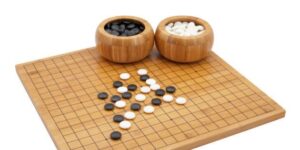
How did you like the Go glossary?
Go is a game that can be enjoyed by people of all ages, from children to the elderly, and from beginners to professionals.
If you want to win against your enemy, you need to not only think about each move, but also look at all the situations and devise a strategy.
You must read your opponent’s intentions and pay attention not only to the life and death of your stone, but also to expanding and solidifying your area of influence.
Furthermore, like shogi and chest games, it is a game that requires a lot of patience, concentration, and judgment.
When I write this, it makes me think that Go is a difficult game.
When you actually try it, you don’t have to worry about that, it’s so much fun!
I don’t know what your Go level is if you’re watching this.
The game of Go is a game that anyone can enjoy!
Please enjoy playing Go.
